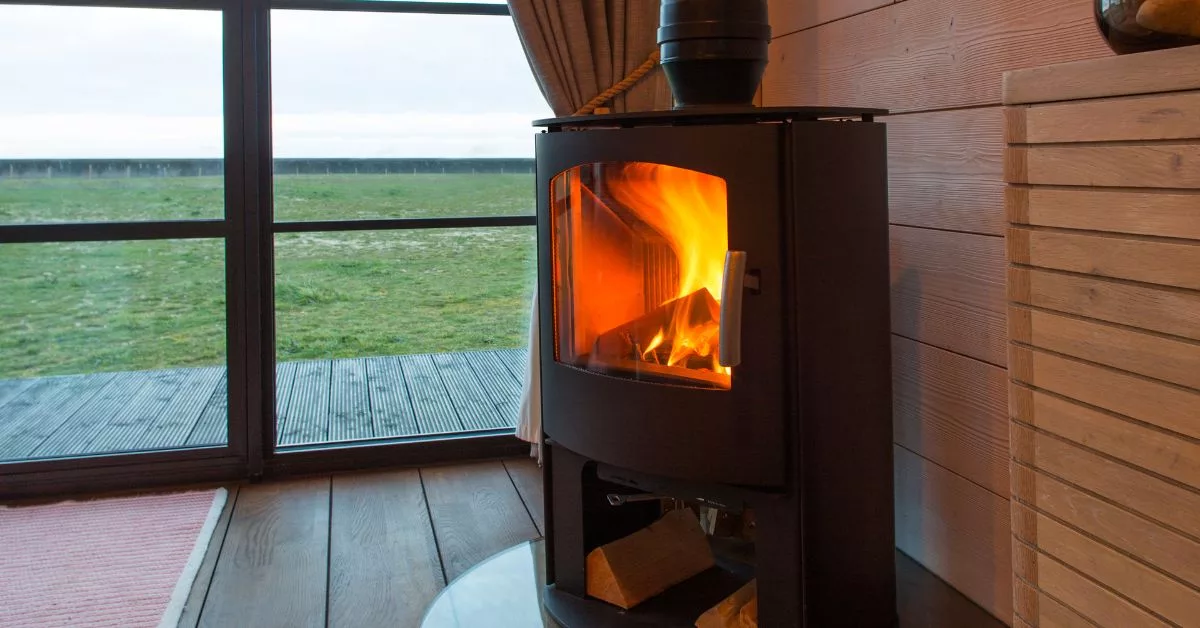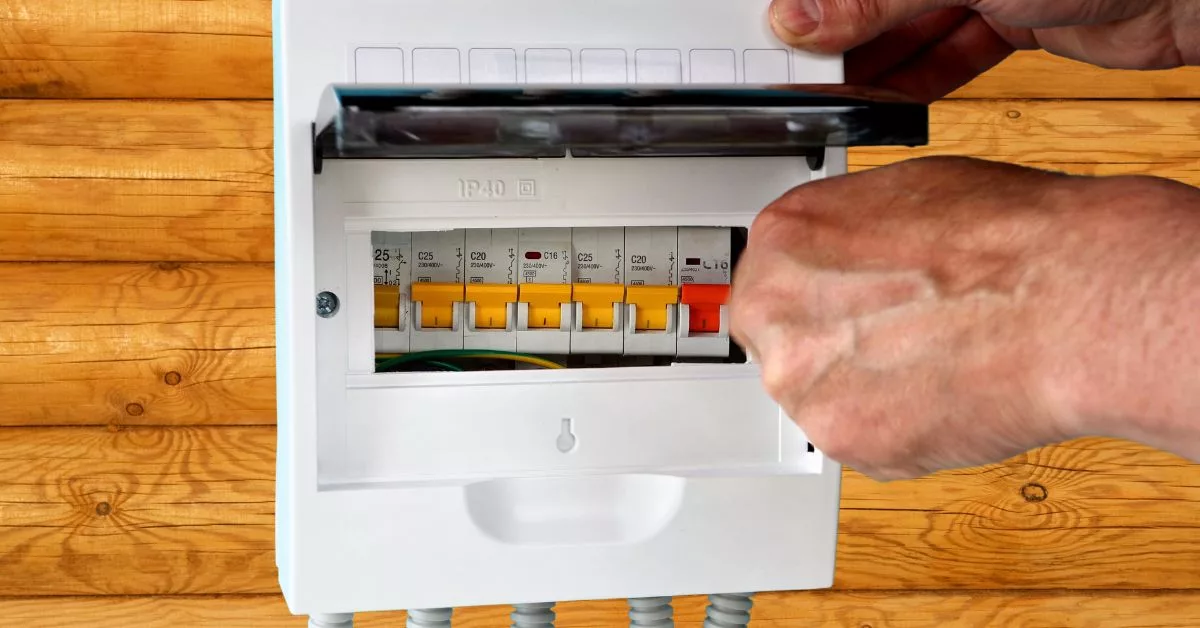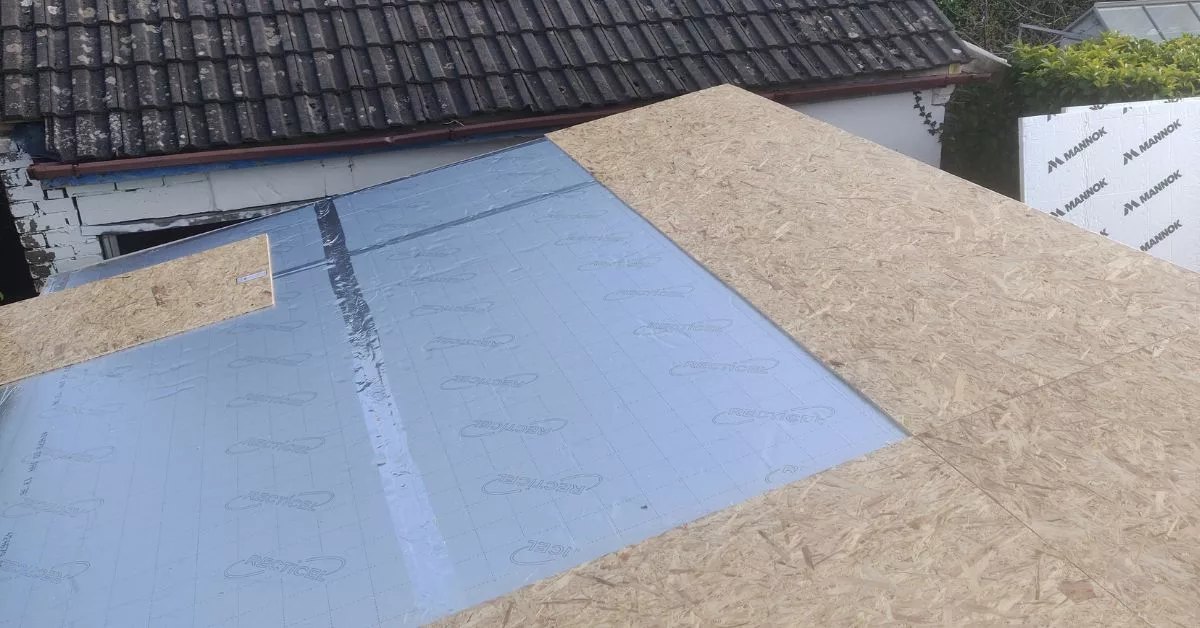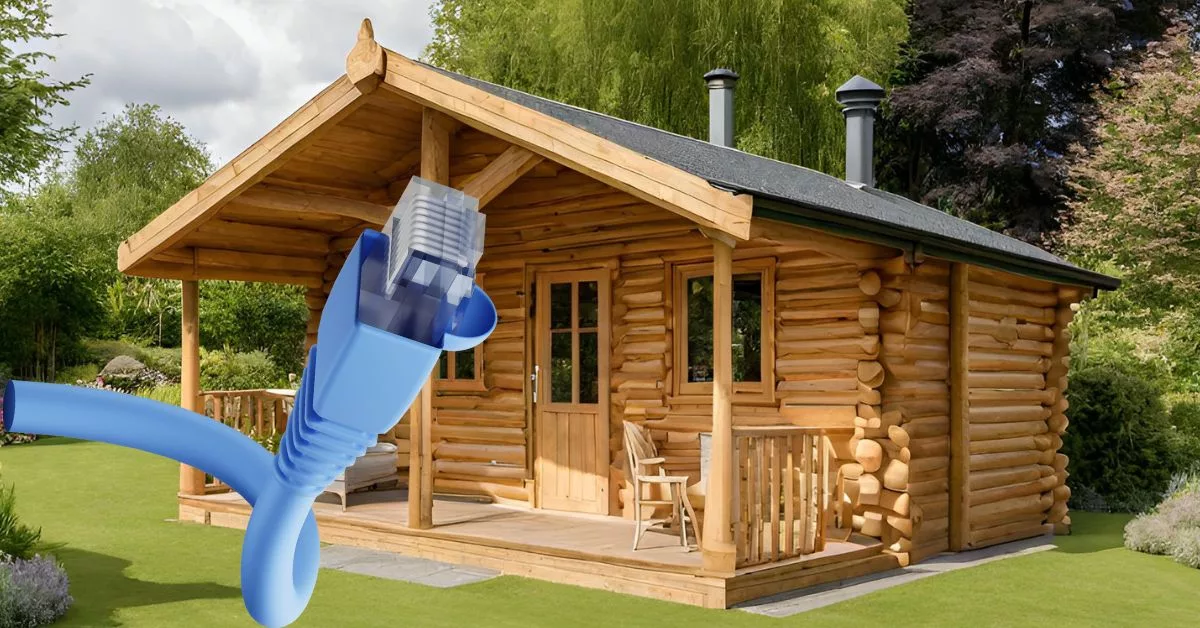When I was looking for a garden log cabin for my home office, a primary requirement was its ability to remain comfortably warm throughout the year. Thankfully, extreme cold is uncommon in the UK, but temperatures can frequently drop below freezing during the winter months. In this article, I share the methods I use to keep my cabin warm during the colder months.
What To Look For When Buying A Log Cabin for Cold Weather
If you are looking to buy a log cabin that can be used in the winter months, then there are a number of features that you definitely need to keep the log cabin warm.
1) Wall Thickness
I would recommend getting a log cabin with a wall thickness of at least 40mm (4cm). Obviously, the thicker the wall, the better. Some cabins come with insulated walls, which are probably going to be the best option, but they are expensive.
2) Double Glazing
You absolutely must have double-glazed windows if you want to use the log cabin in the winter months.
3) Insulated Floor and Ceiling
Floor and ceiling insulation only comes included with the top-end cabins. If you want to insulate a cheaper cabin, you usually have to buy a kit, or you can buy the insulation independently. I purchased the insulation independently for my cabin, which worked out to be considerably cheaper than buying a kit.

4) Floorboards and Roof Boards
Many of the cabins you can buy have the option of upgrading the thickness of the floorboards and roof boards, go for the thickest ones.
5) Log Cabin Size
Larger log cabins are going to be harder and more expensive to heat.
Best Way To Heat A Log Cabin
Most people who have a log cabin will probably end up using some form of electrical heater. Unfortunately, using electricity to provide heat is more expensive than using gas.
Here is the method that I use to heat my log cabin when the weather is cold.
Convection Heater
I have a 2KW convection heater attached to the cabin wall. I have this running most of the time that I’m in the cabin when the temperature outside gets below 10°C. It is usually set to half-power (1KW). At today’s electricity prices, it costs about £0.50 per hour to run.
Electric Fan Heater
As well as the convection heater, I have an electric 2KW fan heater. I use this heater for short periods of time to quickly boost the cabin temperature. It probably only takes about 20 minutes for the fan heater on full blast to warm the cabin up.
Using Smart Home Technology To Keep A Cabin Warm
I have the convection heater in the cabin connected up to a smart plug and a number of Alexa (Echo) automations configured to turn the smart plug on and off, depending on the time and temperature. For example, if the temperature in the cabin is below a certain level and it’s 6:00 am on a weekday, then the automation will turn the heater on so it’s warm for when I start working at 8:00 am.
I’ve also configured Alexa to turn the heaters on \ and off using my voice. This comes in handy when I’ve gone into the house and forgotten to turn the heater(s) off. I just say ‘Alexa, turn the cabin heater off’ and off it goes.
Using smart tech to control the cabin temperature requires an internet connection. Check out how to get internet in a log cabin to get smart tech working in a cabin
Tips To Keep A Log Cabin Warm
Fill Gaps, Prevent Draughts
There are several key areas in most log cabins where gaps are located. Filling the gaps will help keep your cabin significantly warmer.
Floor & Wall – Most log cabins have a ‘floating’ floor. This means the floor is not attached to the cabin. The gap between the floating floor and cabin walls is hidden using wooden strips. Before I attached the wooden strips, I used some silicon sealant to fill the gaps. After I attached the wooden strips, I applied more sealant where the wooden strips met the wall and the floor.
Window Frames – There will be gaps where the windows slot between the cabin walls. When I was assembling the cabin, I noticed that the gaps between the window frame and the cabin wall were quite large, so as I installed the windows, I squirted some expanding foam in the gaps.
Ceiling & Floor – The other areas where slight gaps may exist are where the cabin walls meet the sealing. I used silicon sealant to fill this gap.
Cabin Door – I used some draught excluder foam to ensure that the doors had a tight seal when closed.
Important: Make sure that any gaps are sealed with something flexible as the wood expands and contracts throughout the year
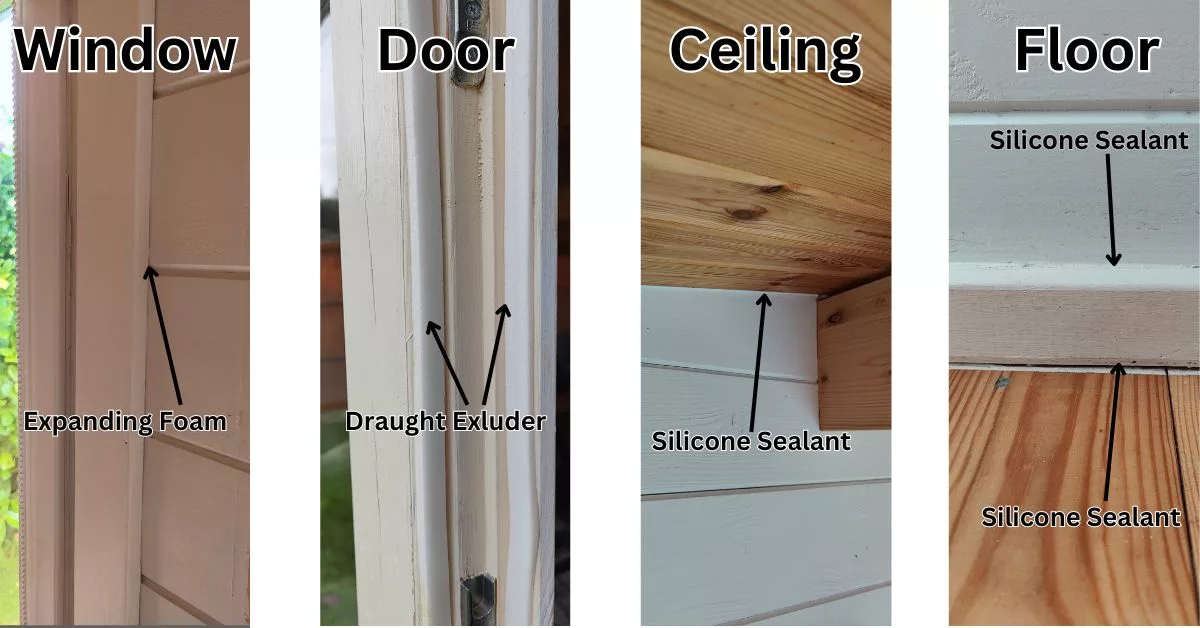
One concern I had with filling all the gaps was that it would cause condensation in the cabin. However, this hasn’t been a problem. I think because the cabin is used virtually every day, meaning the door is regularly opened and closed, heating is on when it’s cold, etc., condensation doesn’t build up. If the cabin wasn’t used for a week or two in the winter months, then condensation would probably appear.
Tip: Using a candle on a windy day is a quick and easy way to see if your cabin has any draughts and where they’re coming from. Simply move the candle around the cabin and see where the flame flickers.
Floor Rugs
I put a large rug on the cabin floor in the winter. This adds some insulation and blocks gaps between the floorboards where draughts can come through. Also, having a rug on the floor makes the cabin feel cosier, psychologically making it warmer.
Slippers
My cabin is a no shoe zone, so in the winter months, I wear a pair of slippers. They’re not the coolest of things, but they help keep me warm.
Conclusion: How To Keep A Log Cabin Warm
You can do many things to keep a log cabin warm. I recommend that you do all of the things I’ve suggested above as they do make a significant difference to how warm your cabin will be.
Frequently Asked Questions
Can a log cabin be warm in winter?
Yes, a log cabin can be kept warm in the winter months. If you follow all the advice above, you will be able to keep a log cabin warm.
Is it expensive to heat a log cabin?
Heating a log cabin will definitely increase your heating bill. I use electric heaters to heat my cabin, and when it is really cold, it probably costs me about £4 per day to heat the log cabin to a comfortable level.
What is the best source of heat for a log cabin?
There isn’t a single good answer to this question, as it will depend on various factors, such as how often the cabin is used, where you live, the size of the cabin, etc.
I’d say the quickest and easiest way for most people to heat a cabin is to use an electric convection or fan heater.
How warm are log cabins?
They’re as warm as you want to make them. Getting a log cabin warm requires more effort and cost than warming your house.
Can I use a diesel heater to heat a log cabin?
In theory, yes, a diesel heater can be used to heat a log cabin. It’s not something I’ve tried, so I can’t say much on the topic.
I’m planning on buying a cheap diesel heater from Amazon to test it out. I’ll create a new post describing how I get on.
Update: I now use a diesel heater to keep my cabin warm.

